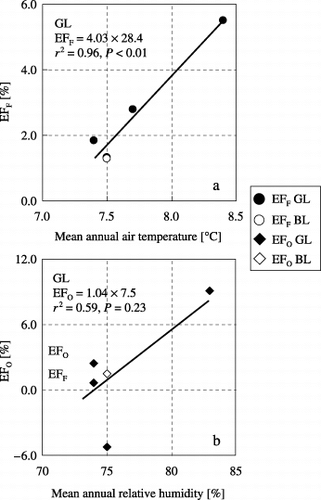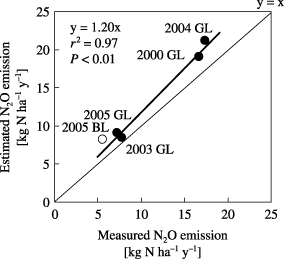Figures & data
Table 1 Chemical properties of the soil layers in Gray Lowland soil (GL) and Brown Lowland soil (BL)
Figure 1 Seasonal variation in N2O flux at the Gray Lowland soil (GL) and Brown Lowland soil (BL) sites. The arrows indicate the time of chemical fertilizer application (CF), organic fertilizer application (OF), root cutting (RC) and harvest and residue application (H). The four treatments were: FOP, chemical nitrogen fertilization and organic matter application, with plants; F, chemical nitrogen fertilization only, without plants; OP, organic matter application, with plants; C, no fertilization or organic matter, and no plants. Error bars indicate standard deviation.

Figure 2 Seasonal variation in N2O-N/NO-N at the Gray Lowland soil (GL) and Brown Lowland soil (BL) sites. See Fig. 1 for an explanation of the arrows and treatments.
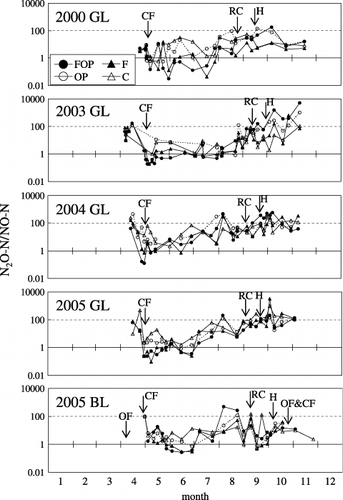
Figure 3 Seasonal variation in air and soil temperatures and water-filled pore space (WFPS) at the Gray Lowland soil (GL) and Brown Lowland soil (BL) sites. See Fig. 1 for an explanation of the treatments.
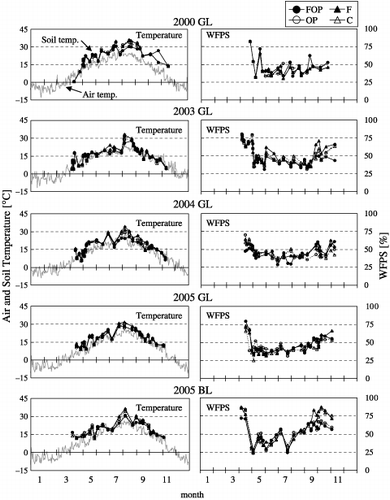
Figure 4 Seasonal variation in soil concentration and soil concentration at the Gray Lowland soil (GL) and Brown Lowland soil (BL) sites. See Fig. 1 for an explanation of the arrows and treatments.
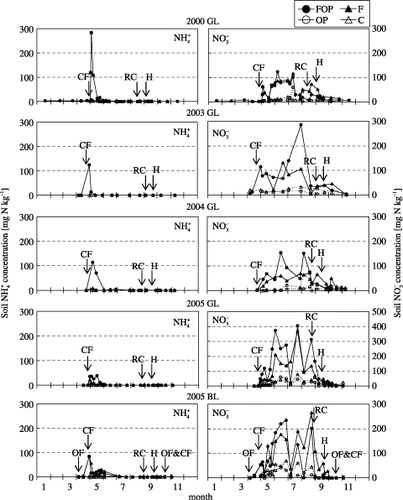
Table 2 Nitrogen application, N2O emission, EFF and EFO in Gray Lowland soil (GL) and Brown Lowland soil (BL)
Figure 5 Relationship between N2O emission and mean temperature and precipitation at the Gray Lowland soil (GL) site. (a) Relationship between the 2-month N2O emission and mean annual air temperature in the chemical nitrogen fertilization and organic matter application, with plants (FOP) and the chemical nitrogen fertilization only, without plants (F) treatments from May to June, (b) relationship between the 2-month N2O emission and precipitation in the FOP and the organic matter application, with plants (OP) treatments from September to October.

Figure 6 Relationships between emission factors (EF) and climatic conditions. (a) Relationship between the emission factor of N2O associated with the application of chemical nitrogen fertilizer (EFF) and mean annual air temperature, (b) relationship between the emission factor of N2O associated with the application of organic nitrogen (EFO) and mean annual relative humidity. Regression analysis carried out only on the Gray Lowland soil (GL) data.
